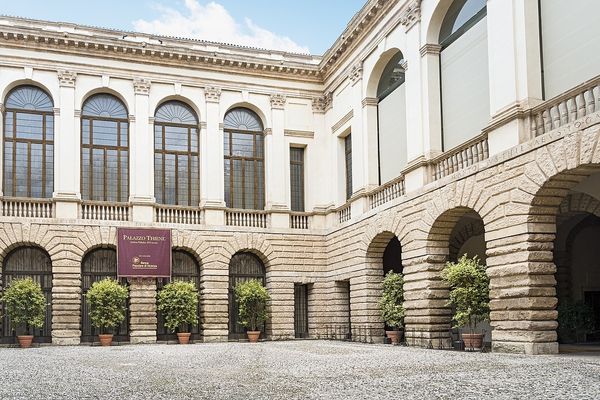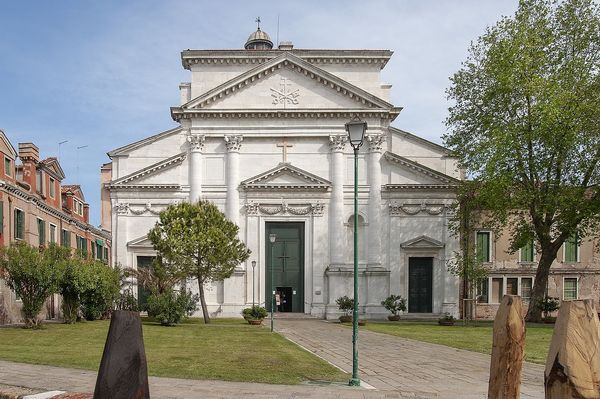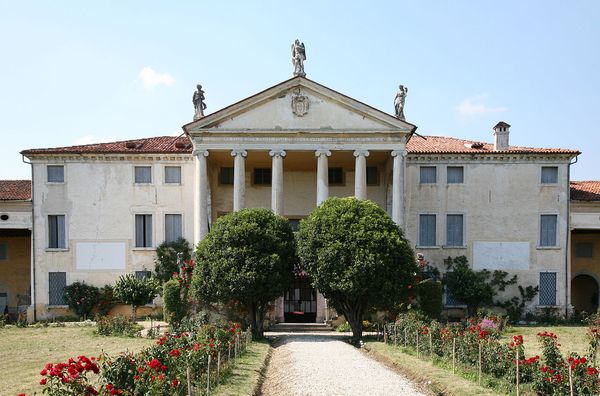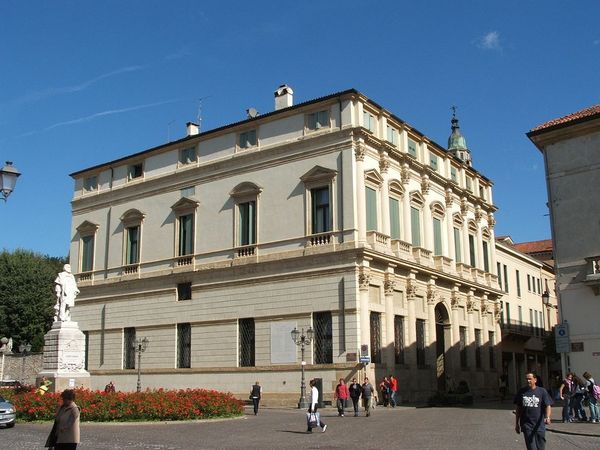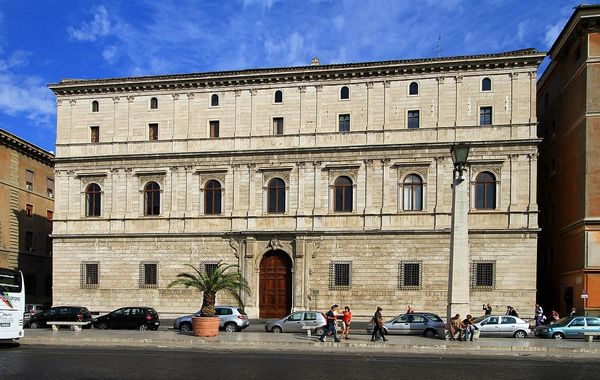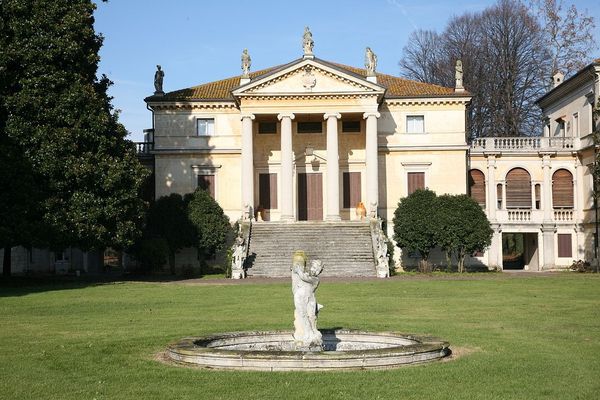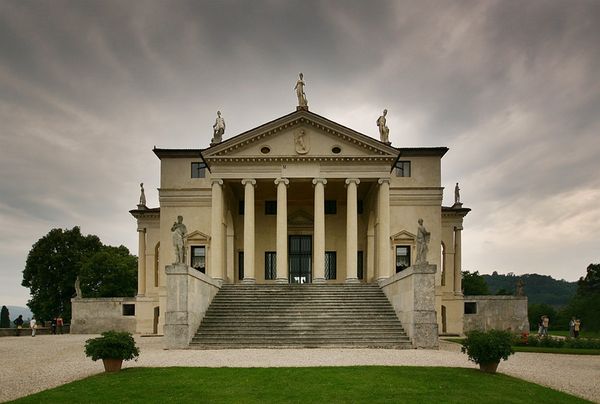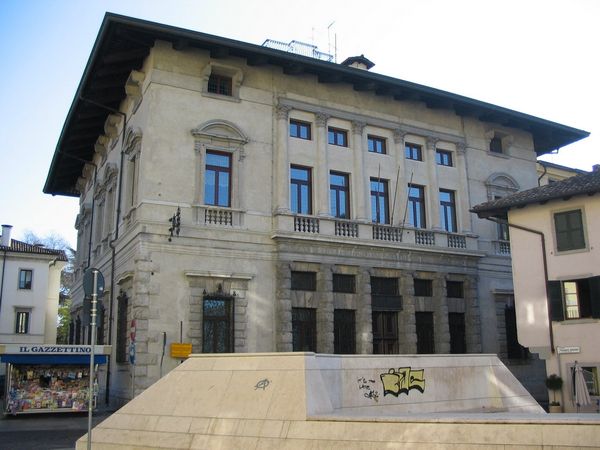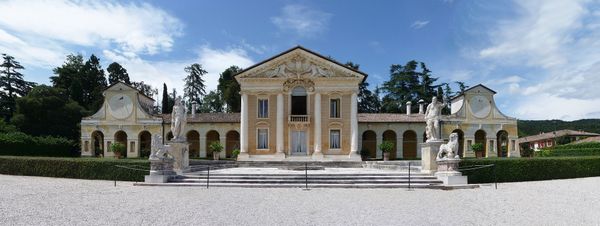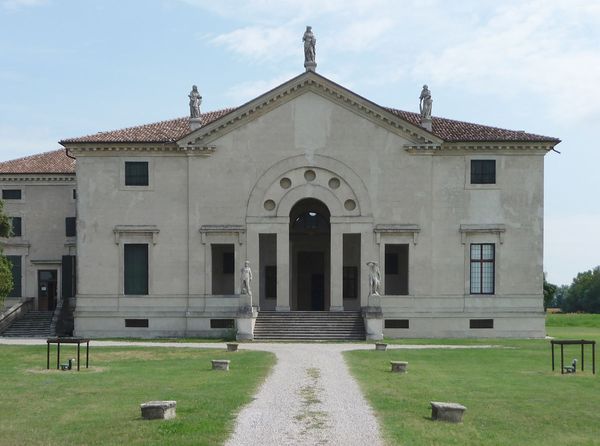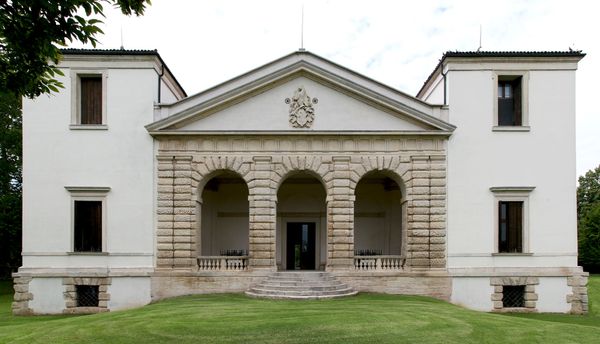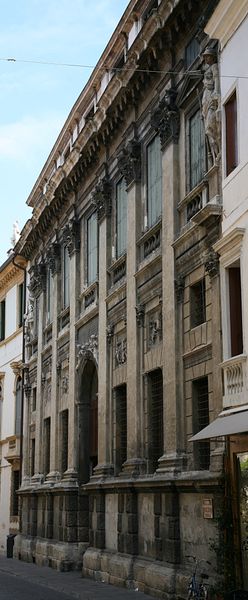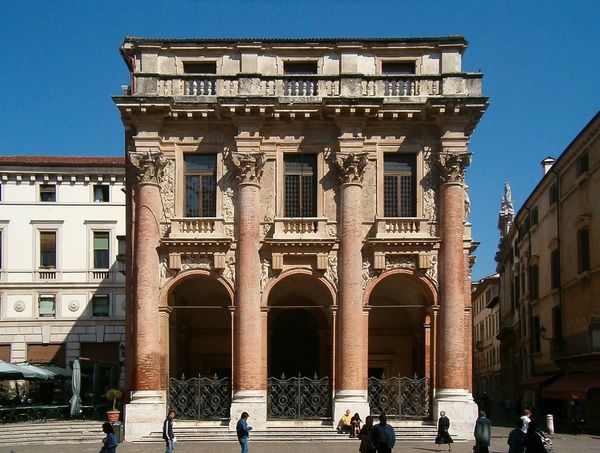
Copyright: Public domain
Curator: The Palazzo Chiericati in Vicenza, designed by Andrea Palladio around 1550. A striking example of Renaissance architecture. Editor: Imposing, isn’t it? All that gleaming white stone against the sky. The rhythm of the columns gives it a really stately feel. Curator: Absolutely. It’s a fascinating illustration of how Palladio drew from classical forms and principles. Look at the symmetrical facade, the use of Doric and Ionic orders – key components in his architectural vocabulary, intended to communicate power and stability. Editor: Yes, it projects a powerful image, almost aggressively formal. I wonder how the construction of such a building impacted the local labor force at the time, what types of stone were quarried and transported to complete such an extensive building project. Were there any regulations for artisans working in the region at this time? Curator: The creation of these grand structures provided significant work opportunities. Analyzing payrolls and construction contracts from that era would undoubtedly unveil much about material economies. There is certainly something poignant in examining those everyday details juxtaposed with the palace's high design and intent. The museum in which the Palazzo is home today contributes to the city's prestige; do you think it’s shifted how we interact with art and history, making it accessible, or isolating in some manner? Editor: Museums and galleries absolutely mediate how we encounter art. Presenting works within specific narratives, often reinforces established power dynamics. Consider, too, how these spaces can contribute to the "gentrification" of culture, sometimes creating an exclusive environment. Is there more effort required today than centuries prior to access the historical implications of architectural art such as this building? Curator: These reflections allow us to delve further, acknowledging the evolving ways in which we receive and perceive this masterpiece. The Palazzo represents both a timeless aesthetic and a dynamic engagement with the social conditions of the past and present. Editor: Indeed, it makes you reconsider architecture, no just as a structure but as a convergence point for materials, people and meanings that endure across time.
Comments
No comments
Be the first to comment and join the conversation on the ultimate creative platform.
